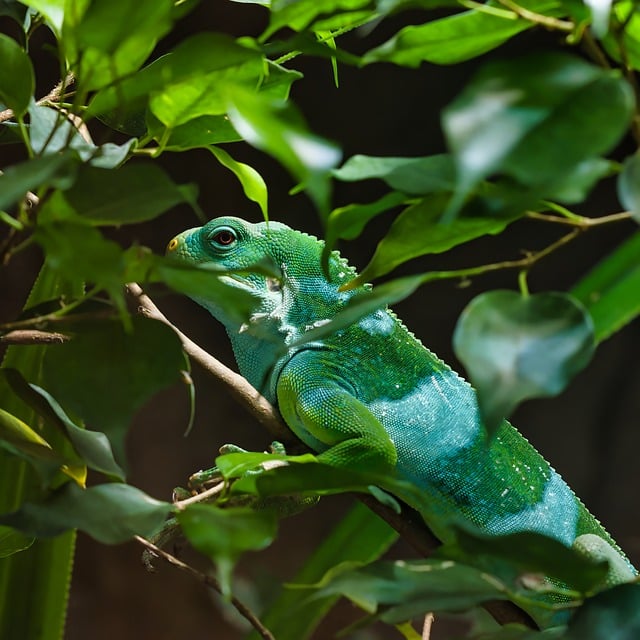Animals form the backbone of Earth’s ecosystems, showcasing a breathtaking array of habitats and adaptations that sustain life on our planet. This article delves into the intricate roles they play within their environments and our societies, from pollination to human well-being. As we explore conservation efforts and the pressing challenges facing animal species globally, it becomes clear that understanding and protecting these remarkable creatures is crucial for the health of our world. Join us as we examine the pivotal position of animals in the web of life and the concerted actions required to ensure their survival for generations to come.
The Diverse Ecosystems of Animals: An Overview of Habitats and Adaptations
Animals inhabit a myriad of ecosystems across the globe, each with its unique challenges and resources. From the vast expanse of the ocean’s depths to the dense foliage of tropical rainforests, every habitat shapes an animal’s form and function. Marine creatures like whales and sharks have evolved streamlined bodies for efficient swimming, showcasing the profound impact of their environment on their physical adaptations. Similarly, animals in arid regions such as desert foxes possess special physiological traits that allow them to conserve water and survive in these harsh conditions. These adaptations are not merely responses to immediate threats but are intricately woven into the survival strategies of each species, ensuring a delicate balance within their respective ecosystems.
The array of habitats on Earth, from polar ice caps to warm deserts, equatorial jungles to alpine mountains, has led to an extraordinary diversity of animal life. Each habitat provides different selective pressures, resulting in a wide spectrum of behaviors and physical traits. For instance, polar bears have developed thick fur and large paws for insulation and terrain adaptation, enabling them to thrive in the frigid Arctic. Conversely, animals like the African elephant, which roam the savannas, possess adapted social structures and communication mechanisms that facilitate their survival in more open spaces with fewer trees for cover. These adaptations are not isolated incidents but are part of a long-standing evolutionary process, highlighting the resilience and ingenuity of animal life in adapting to their environments.
The Role of Animals in Ecosystems and Human Society
Animals occupy a multifaceted role within ecosystems that is both intricate and indispensable. They serve as keystone species in many environments, regulating populations of other organisms through predation and competition, thus maintaining ecological balance. For instance, large herbivores like elephants and bison shape their habitats through grazing and trampling, which fosters plant diversity and soil health. In marine ecosystems, animals such as whales and sharks influence the abundance of prey species, affecting the overall dynamics of their environments. Additionally, pollinators like bees, birds, and bats are crucial for plant reproduction, ensuring the continuity of numerous food crops that sustain human societies.
Beyond their ecological functions, animals have a profound impact on human society. Domesticated animals provide companionship, emotional support, and therapeutic benefits to people. They also play significant roles in various industries, from agriculture, where animals like cattle and chickens contribute to food production, to the pet industry, which has a substantial economic impact. Furthermore, animals are central to cultural and religious practices across many communities. In biomedical research, animals have been instrumental in advancing human health by contributing to the development of vaccines, medical treatments, and understandings of diseases. However, the human-animal relationship is currently facing challenges due to habitat destruction, pollution, and overexploitation, which threaten biodiversity and animal welfare globally. It is imperative to recognize and conserve the roles animals play in ecosystems and society, ensuring a harmonious coexistence for future generations.
Conservation Efforts and the Future of Animal Species Worldwide
The plight of animal species around the globe has garnered significant attention, leading to a myriad of conservation efforts aimed at preserving biodiversity. These initiatives encompass habitat restoration, legal protections, wildlife monitoring, and research that inform policy and action. Conservation organizations and governments worldwide collaborate on projects to safeguard endangered species, such as the Amur leopard, the Javan rhinoceros, and countless others. These efforts are critical in the face of threats like habitat destruction, pollution, climate change, and poaching. As we move forward, technological advancements, including genomic research and artificial intelligence, are becoming pivotal tools in tracking animal populations and predicting environmental changes that could impact their survival. The future of animal species hinges on our collective commitment to these conservation strategies, ensuring that the rich tapestry of life on Earth remains intact for generations to come. By fostering an understanding of the intrinsic value of all animals and promoting sustainable practices across various sectors, we can work towards a future where both wildlife and human communities thrive.
